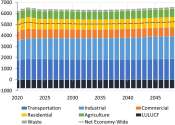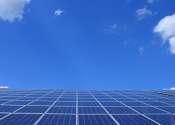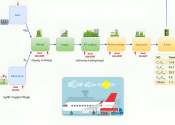Decarbonization scenario model analyzes ambitious pathways to net-zero carbon emissions
While the world would love to have a quick fix, there is no one specific pathway to stop or slow the rate of climate change.
Apr 16, 2024
0
0
Business

While the world would love to have a quick fix, there is no one specific pathway to stop or slow the rate of climate change.
Apr 16, 2024
0
0
Business

An electricity market analysis found adding battery storage to enhance grid reliability caused power generation markets to favor coal over natural gas.
Apr 11, 2024
0
2
Energy & Green Tech

As countries worldwide transition to more wind and solar generation and electrify energy end uses, societies are becoming more intertwined with weather conditions. Meanwhile, the climate is rapidly changing and making extreme ...
Apr 11, 2024
0
26
Energy & Green Tech

Anyone who has ever hot-footed it barefoot across the beach on a sunny day walks away with a greater understanding of just how much heat sand can retain. That ability is expected to play a vital role in the future, as technology ...
Mar 29, 2024
0
13
Engineering

Scientists have developed a new solar-powered system to convert saltwater into fresh drinking water which they say could help reduce dangerous waterborne diseases like cholera.
Mar 27, 2024
1
144
Engineering

When FAMU-FSU College of Engineering Professor Fang Peng was a boy, he saw the power and peril of electricity firsthand. He was in middle school when his remote Chinese hometown first received electric service. His family ...
Mar 26, 2024
1
53
Energy & Green Tech

The shift toward renewable energy sources decreases our reliance on fossil fuels, providing a cleaner, more sustainable alternative. However, with their increasing use and development, we also face new challenges. Solar photovoltaic ...
Mar 12, 2024
0
22
Energy & Green Tech

Technologies that can store the energy produced by photovoltaics and wind turbines could play a key role in the decarbonization of the energy sector. The operation of both solar cells and wind turbines relies on suitable ...
Energy & Green Tech

In order to prevent power grid failure in a society where electrification is supplied increasingly by variable sources like solar and wind, researchers in Sweden report the development of artificial intelligence algorithms ...
Feb 28, 2024
0
71
Energy & Green Tech

International flights can transport us to most of the world's major cities within a day or two and later bring us home—often for less than a thousand dollars per seat. This jet-setting, however, comes with a heavy carbon ...
Feb 27, 2024
1
43
Renewable energy is energy generated from natural resources—such as sunlight, wind, rain, tides, and geothermal heat—which are renewable (naturally replenished). In 2006, about 18% of global final energy consumption came from renewables, with 13% coming from traditional biomass, such as wood-burning. Hydroelectricity was the next largest renewable source, providing 3% of global energy consumption and 15% of global electricity generation.
Wind power is growing at the rate of 30 percent annually, with a worldwide installed capacity of 121,000 megawatts (MW) in 2008, and is widely used in European countries and the United States. The annual manufacturing output of the photovoltaics industry reached 6,900 MW in 2008, and photovoltaic (PV) power stations are popular in Germany and Spain. Solar thermal power stations operate in the USA and Spain, and the largest of these is the 354 MW SEGS power plant in the Mojave Desert. The world's largest geothermal power installation is The Geysers in California, with a rated capacity of 750 MW. Brazil has one of the largest renewable energy programs in the world, involving production of ethanol fuel from sugar cane, and ethanol now provides 18 percent of the country's automotive fuel. Ethanol fuel is also widely available in the USA. While most renewable energy projects and production is large-scale, renewable technologies are also suited to small off-grid applications, sometimes in rural and remote areas, where energy is often crucial in human development. Kenya has the world's highest household solar ownership rate with roughly 30,000 small (20–100 watt) solar power systems sold per year.
Some renewable energy technologies are criticised for being intermittent or unsightly, yet the renewable energy market continues to grow. Climate change concerns coupled with high oil prices, peak oil and increasing government support are driving increasing renewable energy legislation, incentives and commercialization. New government spending, regulation, and policies should help the industry weather the 2009 economic crisis better than many other sectors.
This text uses material from Wikipedia, licensed under CC BY-SA